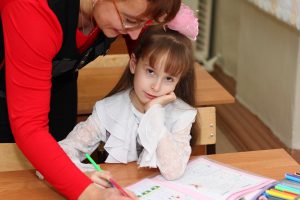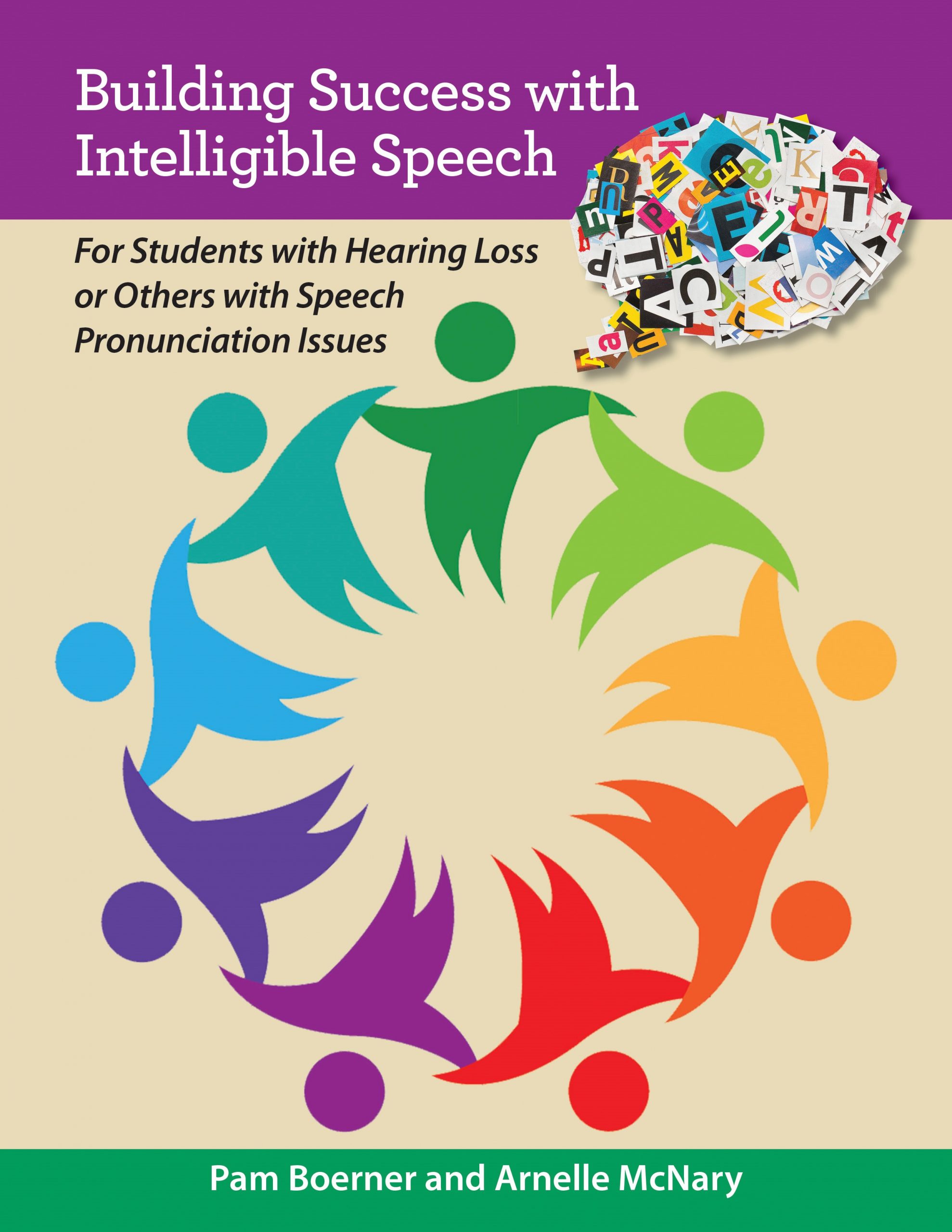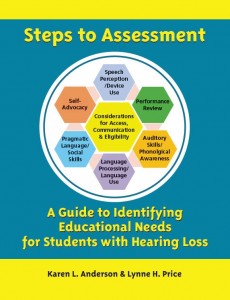Related Products
For Professionals
- Amplification
- Assessment of Student Skills, Challenges, Needs
- Early Childhood: Infants, Toddlers, Preschool
- Hearing Loss – Identification, Impact and Next Steps
- IDEA Law Summary Information
- Language and Speech Development Issues
- Legal Issues in Serving Children with Hearing Loss
- Listening (Auditory Skills) Development
- Planning to Meet Student Needs
- Self-Advocacy Skills for Students with Hearing Loss
- Self-Concept: How the Child with Hearing Loss Sees Himself
- Social Skills
- Speech Perception & Learning
Related Teacher Tools Takeout Items
Identifying Student’s Functional Issues in the Classroom

The evaluation process requires1 that a variety of assessment tools and strategies are used to gather relevant functional, developmental, and academic information about the student to determine if there is a disability that is adversely affecting educational performance. We also must develop a statement about the student’s present level of academic achievement and functional performance. Classroom observation provides the opportunity to collect data on how the student with hearing loss functions in the classroom in comparison to typical peers. Using the ‘deaf lens’ during observations, systematically considering performance, and obtaining teacher checklist information all help to paint the picture of functional performance and identify issues.
Classroom Observation
We need to observe student behavior using what we know about how hearing loss impacts speech perception, listening, learning, language, and overall social interaction. Classroom observation is a critical part of evaluation and planning to appropriately meet student access accommodation and educational performance needs.
The following “lenses” are what professionals with expertise in the education of students who are deaf or hard of hearing bring to the assessment/IEP team that is different from other educational professionals.
Communication Lens
- How much instruction does the student understand?

- What is the student’s level of classroom interaction?
Participation and Social Language Lens
- What strategies or compensatory skills does the student utilize?
- What does the student do when there are learning breakdowns?
- How does the student understand and use social language in the inclusive classroom setting?
- Are the student’s use and understanding of social language developing appropriately?
Curriculum Lens
- What strengths and gaps in access were observed when the teacher delivered the instruction?
- What strengths and gaps in access were observed during peer discussions and group interactions?
- How did the student access the general education curriculum when technology was used?
- Does the student demonstrate progress similar to their cognitive peers in the general education curriculum?
It is critical to not only note behaviors, but also collect specific data. The following are examples:
Frequency – number of times, or how often, a student behavior occurs.
“Tyler turned to watch his peers offering oral responses 2/9 times, or 22% of the time.”
Duration – total amount of time a student is engaged in a specific behavior.
“During a 45-minute class, Sally attended to the interpreter 60% of the time. The longest interval of attending was for 5 minutes.”
Latency – elapsed time between an event and the expected behavioral response.
“Gerald hesitated before following teacher directions in 4 out of 5 instances observed. In comparison to peers, his hesitation ranged from 15 seconds to 2 minutes longer to begin an activity than a sample of 5 surrounding peers.”
Click here to download the Classroom Observation Record of Behavior
Focused Consideration of Access Needs
 Universally, students with hearing loss have greater difficulty accessing verbal communication in both large and small group instruction within the typical classroom environment. It is not a question of IF a student needs accommodation, it is a question of verifying WHEN, under what conditions, WHICH accommodations are necessary to level the access playing field. Schools are required2 to ensure that communication for students who are deaf or hard of hearing is as effective as communication for others to afford an equal opportunity to reach the same level of achievement as that provided to others. Functional hearing is necessary to identify and cannot be revealed by an audiogram or speech and language evaluation. Results of a Functional Listening Evaluation in combination with data from a classroom observation is an effective way to start a discussion with the school team about the necessity of providing effective accommodations to improve communication access. Refer to the White Paper on Estimating Access for more information.
Universally, students with hearing loss have greater difficulty accessing verbal communication in both large and small group instruction within the typical classroom environment. It is not a question of IF a student needs accommodation, it is a question of verifying WHEN, under what conditions, WHICH accommodations are necessary to level the access playing field. Schools are required2 to ensure that communication for students who are deaf or hard of hearing is as effective as communication for others to afford an equal opportunity to reach the same level of achievement as that provided to others. Functional hearing is necessary to identify and cannot be revealed by an audiogram or speech and language evaluation. Results of a Functional Listening Evaluation in combination with data from a classroom observation is an effective way to start a discussion with the school team about the necessity of providing effective accommodations to improve communication access. Refer to the White Paper on Estimating Access for more information.
Click here to download the Accessibility Considerations Worksheet from Teacher Tools Takeout
Gathering Information from Classroom Teachers
Teachers spend more time with the student than any other educational professional. It is necessary to obtain their thoughts about the student’s function in comparison to class peers. By providing checklists targeted to identifying issues related to hearing loss, classroom teachers also become more aware of the subtle impacts of hearing loss on performance and may be more open to team discussions of student needs. Examples of teacher checklists are:
- Screening Instruments For Targeting Educational Risk
Original forms can be downloaded from this webpage. Updated forms that are computer fillable are available in the New Teacher Bundle .
- Listening Instrument For Education – Revised (LIFE-R) Teacher Appraisal
The Teacher Appraisal can be downloaded. There are two pages to the appraisal. The first page is the Teacher Appraisal of Listening Difficulty and focuses on student attention and class participation. The second page is the Teacher Checklist: Self-Advocacy and Instructional Access. The DHH professional can choose to request that the teacher fill out only one page, based on the information they desire to collect.
- Placement and Readiness Checklists (PARC): General Education Inclusion Readiness Checklist
This checklist can be downloaded. It may work best for the DHH professional to sit down with the teacher in an interview format to complete this checklist. Alternately, the DHH professional can complete the checklist after classroom observation and/or from their knowledge from working with the student and then invite the teacher to review and discuss the student’s performance. This PARC checklist is a reliable and valid tool to identify the readiness skills of students who are deaf or hard of hearing in grades kindergarten through 7. A study found that the mean ratings for DHH students were significantly lower than for their hearing peers.
Gathering functional information about educational performance is every bit as important as considering academic performance1. The communication access issues of our students require them to work harder, expending more energy, often to receive less information than their typically hearing peers. Functional performance issues require appropriate access accommodations. They may also warrant instruction in self-advocacy skills, social interaction, or other aspects of the Expanded Core Curriculum that need specific and direct teaching.
1 IDEA Eligibility Determination – Section 300.304(b)(1)
2 Americans with Disabilities Act: ADA Title II 28 C.F.R. 35.160(a)(1) and Title II 28 C.F.R. 35.130 (b)(1)(iii).


